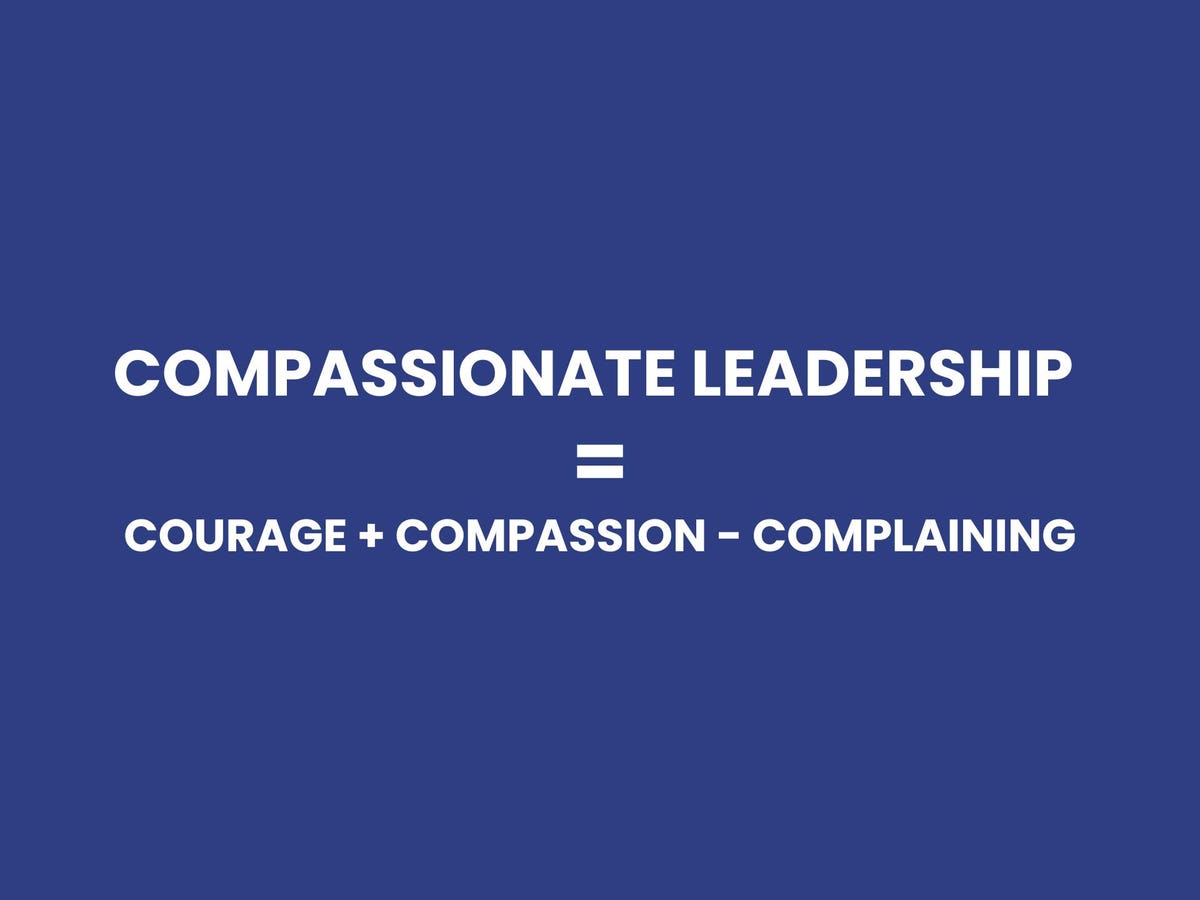Today I am unveiling a new series and a new approach:
Compassionate Leadership = Courage + Compassion – Complaining
Balancing compassion and courage can be difficult. In my experience, most leaders tend to favor one or the other as a natural style, but great leaders learn to do both. In addition, if all of us can take what we are complaining (or concerned) about and turn it into a problem to be solved, the world will be better.
Meet Josh Tetrick, the CEO of Eat Just and a Compassionate Leaders Circle Awards honoree. Tetrick was concerned about hunger, the planet, and animal welfare, so in 2011, he created a company that addressed all those things by developing plant-based and cultivated meat products. After a long courageous battle, the FDA approved Eat Just’s meat products last month.
I recently met two more extraordinary leaders who exemplify this formula in their work, Andrii Bezverkhyi and Emily Bhatnagar.
Bezverkhyi is the co-founder and CEO of SOC Prime, an American enterprise cybersecurity company with Ukrainian roots, founded in 2015. SOC Prime operates the world’s largest and most advanced platform for collaborative cyber defense, following its mission to transform threat detection with the power of collective cybersecurity. As CEO, Bezverkhyi has bravely led his international team through scaling his company as some of his employees continue to work in a war zone in his home country. I met him last month on Zoom as he was driving from Poland to Ukraine to deliver supplies to his team members and other Ukrainian citizens.
Emily Bhatnagar overcame facing her devoted father’s cancer diagnosis as a teen by putting off college to nurse her dad and creating an initiative that helps others. Her organization, For Love and Buttercup, provides books for children in hospitals. CNN and other national news outlets have covered her story, and she inspires other young people who want to find a purpose.
All three of these leaders transformed the problems they were facing into vision, courage, and action.
Leading people is always challenging, whether in a small team or a multinational organization. In this series, you can engage in lessons and activities that will help you grow into your role as a compassionate leader. The foundational shift can seem a bit daunting at first glance. One way to better comprehend this shift is to compare an old leadership paradigm to a new leadership construct:
Old: I am the visionary.
New: Everyone is a visionary.
Embracing this idea and embedding it within the foundation of your organization will be hard work, but the rewards are well worth it. You will soon find yourself at the head of a more productive and competitive team where the untapped potential of each person is unleashed.
Each of the twelve posts in this series will explore one principle and practice of the Donnellan Leadership Method and provide examples of other leaders who are modeling this principle. In addition, I will give an activity to help implement into your team’s day-to-day practices.
Courage – Promote Responsible Risks
Inspiring others to be courageous, expressive, and safe enough to take risks is fundamental when building a cohesive team. Encouraging your subordinates to take responsible risks will improve your organization’s effectiveness, innovation, and competitiveness.
Here are three ways to promote responsible risks:
1. Model courageous behavior and language. Always be willing to speak up for your beliefs, ideas, and staff. If your position on an issue or business dilemma is not in line with your boss or other higher-ups, strategically and respectfully offer your opinion.
2. Let people know that making mistakes is ok. The quickest way to stifle creativity and courageousness is to focus on avoiding mistakes instead of allowing the individual and the team to learn from them and move on.
3. Encourage your staff to take a risk by giving respectful feedback to YOU if they do not agree with your direction or ideas. For many leaders, this may be the most challenging part, but if you can commit to this practice, it will be the most rewarding part of the practice.
Leader Activity:
Write an honest, private journal about how you have limited the courage of your staff in the past and how you will implement this new practice. If you want, discuss your insights with a trusted mentor, friend, or colleague.
Team Activity:
Have a team meeting and ask the following questions:
1. As your leader, how can I create a safer environment to embrace change/risk?
2. How can we as a team improve on that?
3. How can all of you as individuals demonstrate more courage at work?
Learn more about becoming a more effective leader and meet other inspiring leaders in future installments of this series.
Read the full article here





